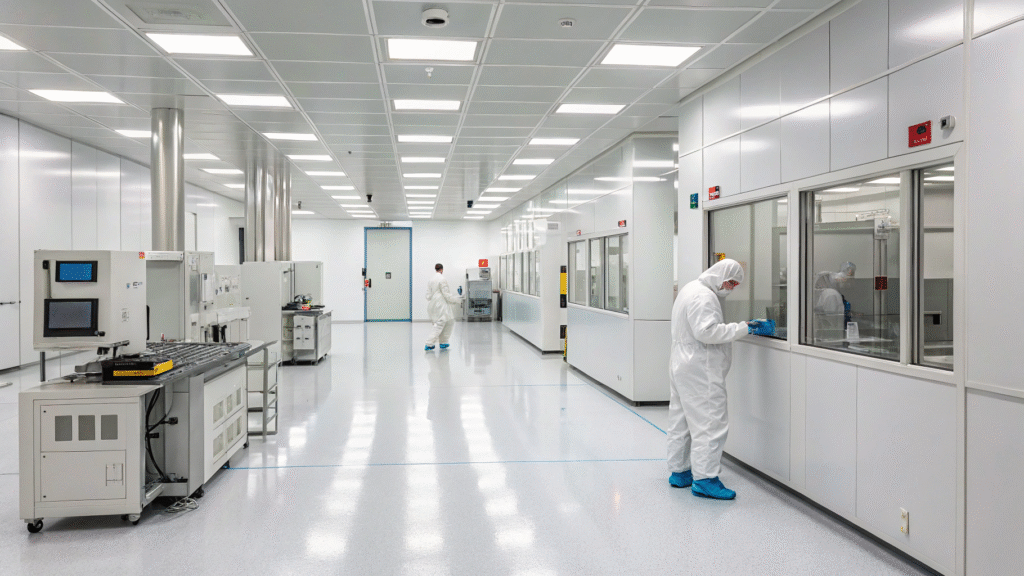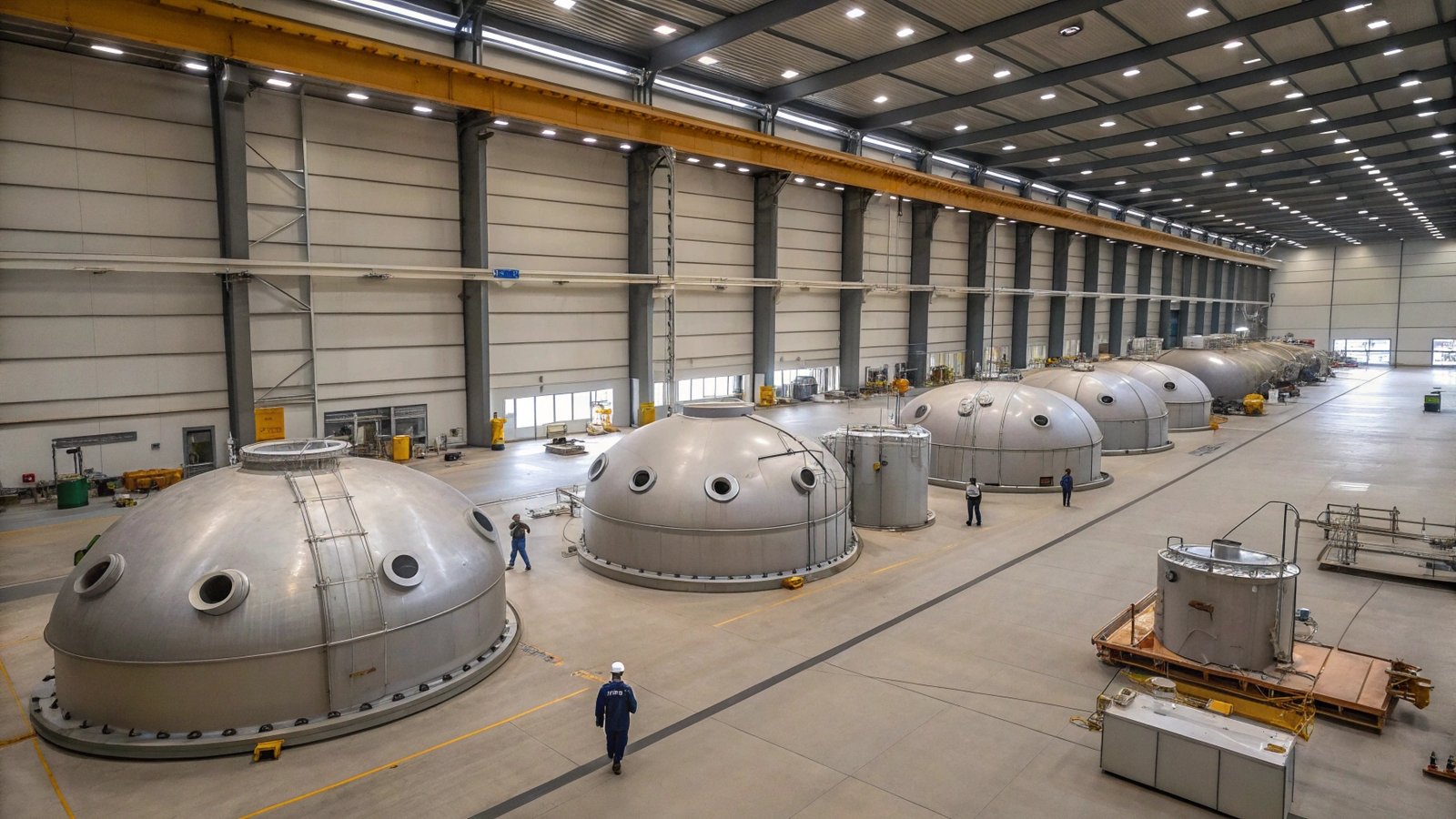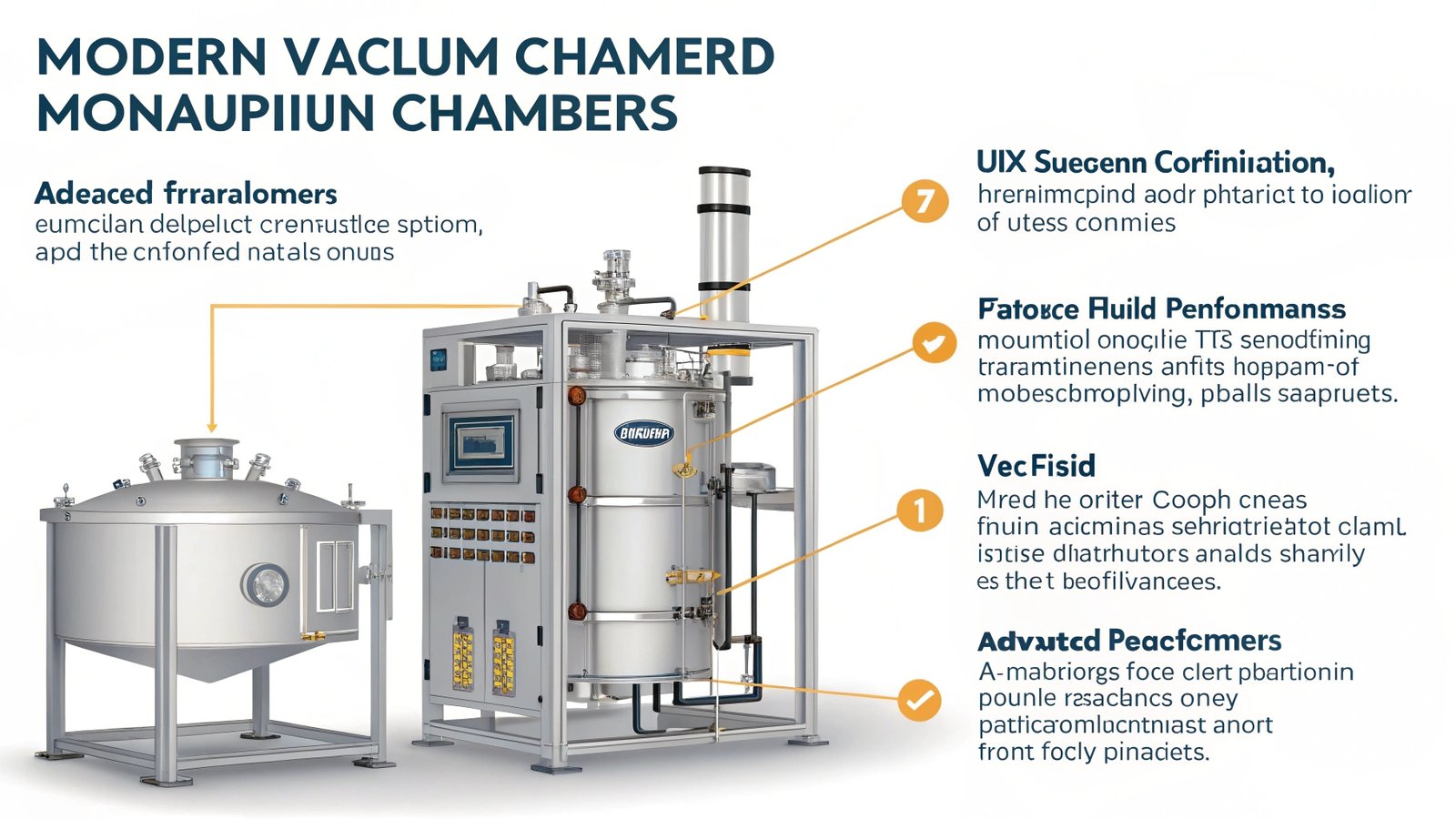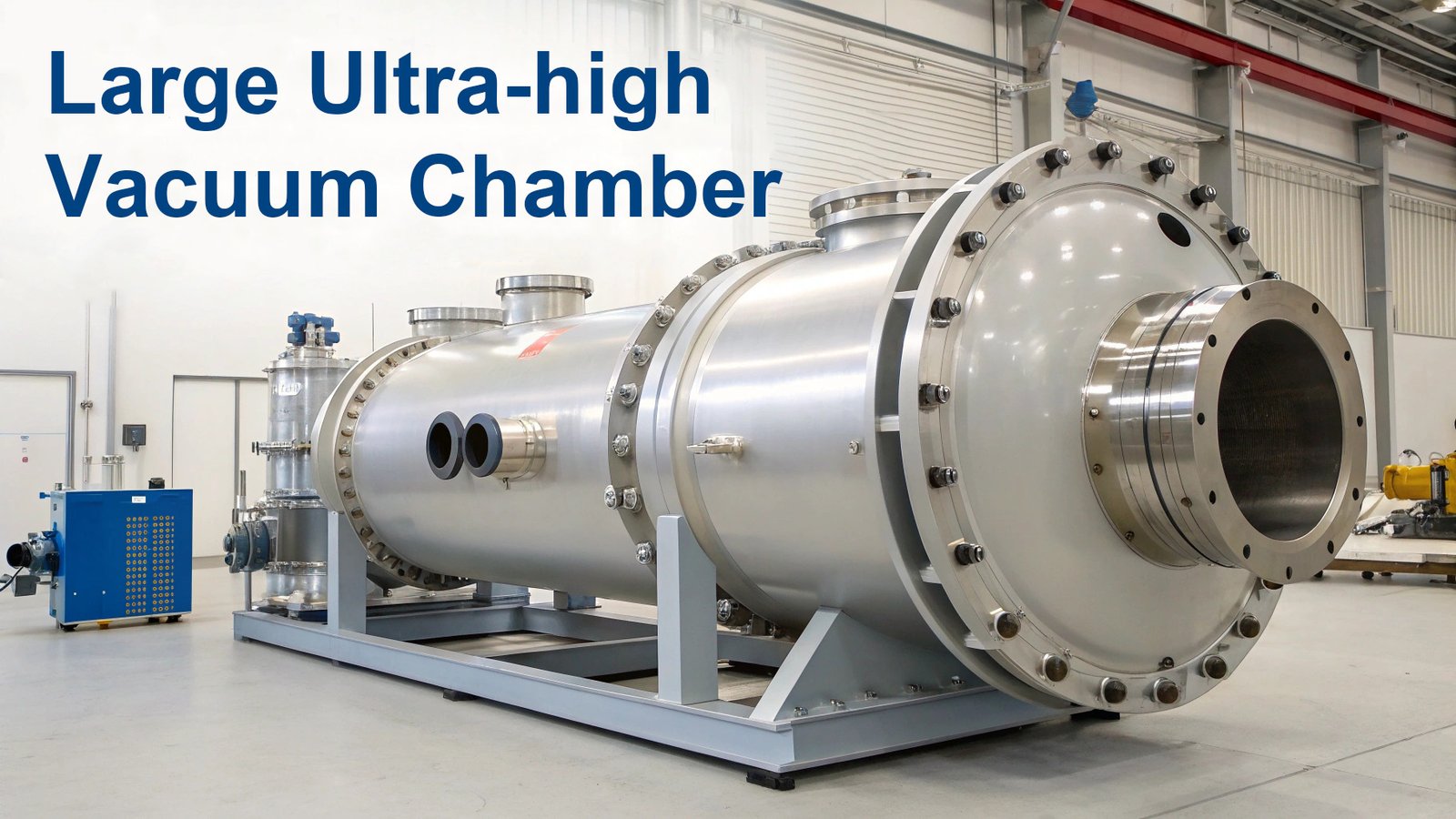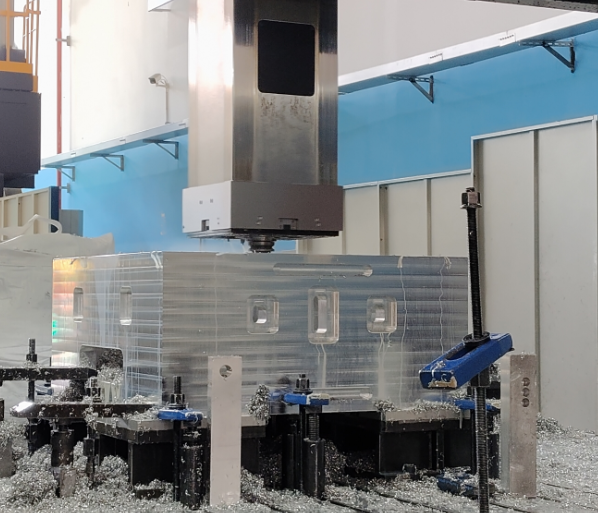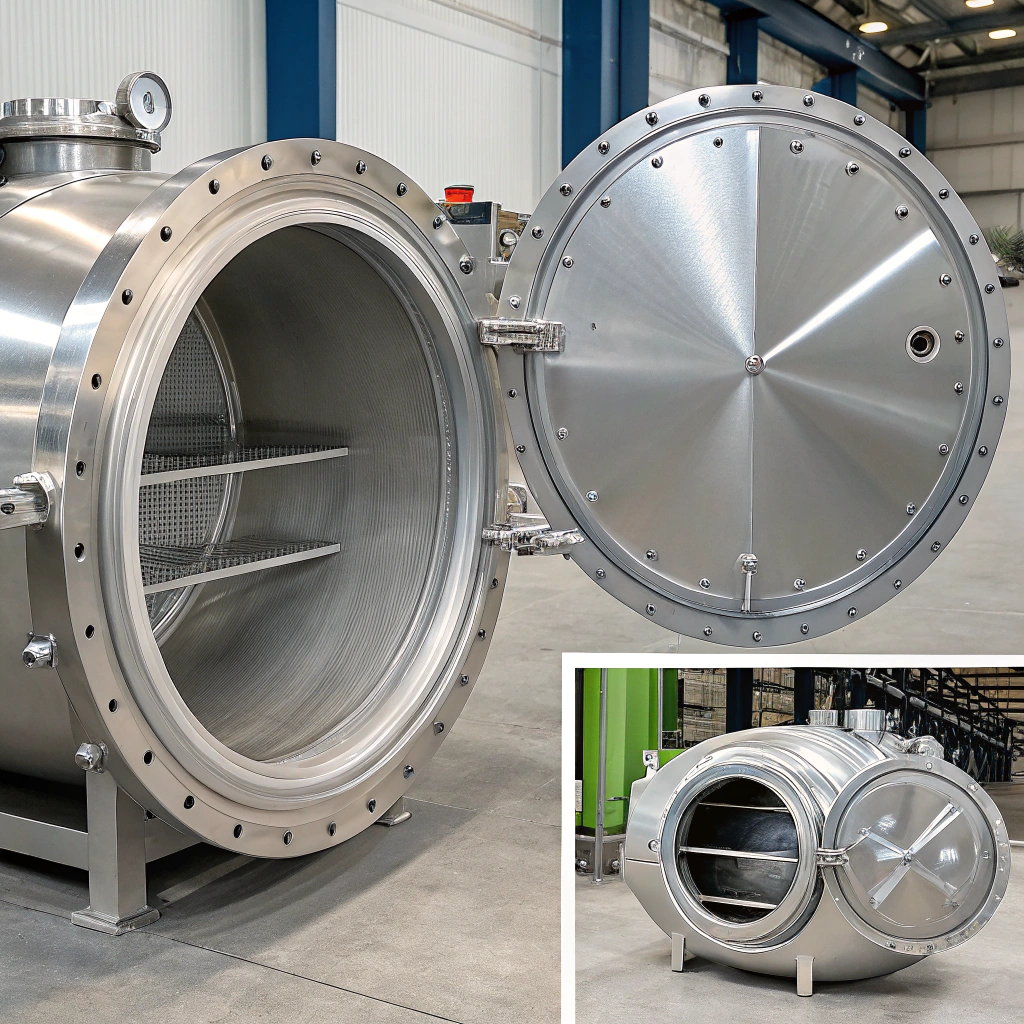Panel manufacturers face immense pressure to reduce defects while scaling up production. Improperly designed vacuum chambers lead to contamination issues, reduced yield rates, and costly production delays.
Vacuum chambers for panel display manufacturing require specialized design considerations focusing on contamination control, uniform process conditions, and accommodation for large substrate sizes. These chambers must maintain precise vacuum levels while handling substantial thermal loads and allowing for automated substrate handling.
The complexity of panel display vacuum systems demands expertise in both vacuum technology and the specific requirements of the display manufacturing process. Let's explore the critical factors that make these systems unique and challenging to design.
How Does Chamber Size and Configuration Impact Panel Display Manufacturing?
FPD manufacturers constantly battle with uniform process conditions across increasingly large glass substrates. Conventional chamber designs struggle to maintain consistency at Gen 10.5+ panel sizes, resulting in quality variations and reduced yields.
Modern panel display vacuum chambers must accommodate glass substrates that can exceed 3 meters in length while maintaining precise process conditions across the entire surface area. This requires specialized chamber configurations with optimized gas flow dynamics and carefully positioned process components to ensure uniform deposition or etching.
The evolution of panel display technology has driven significant advancements in vacuum chamber design. Generation 10.5 fabrication facilities, the current industry standard for large panel production, work with glass substrates measuring approximately 2,940 × 3,370 mm. This massive size creates unique engineering challenges for vacuum chamber construction.
The sheer scale of these chambers requires exceptional mechanical stability to prevent deformation under vacuum conditions. We implement sophisticated finite element analysis during the design phase to identify potential stress points and optimize structural support. Our chambers incorporate precision-engineered reinforcement structures that maintain dimensional stability while minimizing weight and material usage.
Internal chamber configuration must account for the handling of these delicate yet massive glass substrates. We design specialized substrate support mechanisms that prevent sagging or distortion while enabling precise positioning for processing. These supports must minimize contact area to reduce contamination risks while providing adequate stability during various manufacturing processes.
For processes requiring plasma generation, we engineer electrode systems capable of creating uniform plasma distributions across these large areas. This often involves advanced computational fluid dynamics modeling to optimize gas flow patterns and ensure process uniformity from edge to center. Our chamber designs incorporate carefully positioned gas distribution systems with multiple independently controlled zones to maintain consistent process parameters across the entire substrate.
What Materials Are Essential for Panel Display Vacuum Chambers?
Using standard industrial materials in display manufacturing chambers often leads to contamination issues and reduced panel quality. Off-the-shelf solutions simply cannot meet the stringent purity requirements of advanced display production.
Panel display vacuum chambers require ultra-clean materials with minimal outgassing properties and excellent surface finishes. Specialized stainless steel alloys, aluminum, and carefully selected sealing materials are essential to maintain the pristine environment needed for high-quality display production.
Material selection for panel display vacuum chambers represents a critical decision point that directly impacts production quality and equipment longevity. The uniquely demanding requirements of this industry necessitate careful consideration beyond what might be acceptable in other vacuum applications.
For chamber bodies, we typically recommend specific grades of stainless steel such as 304L or 316L that have been specially processed to minimize inclusions and ensure consistent properties throughout large structural components. These materials undergo additional processing steps including vacuum degassing and specialized heat treatments to reduce potential outgassing sources. For chambers used in processes particularly sensitive to metallic contamination, we can implement interior liners made from high-purity aluminum alloys or apply specialized coatings.
Surface quality requirements for panel display vacuum chambers exceed typical industrial standards by several orders of magnitude. We achieve surface roughness values as low as 0.4 μm Ra (micrometers average roughness) through precision machining followed by electropolishing. This exceptional surface finish reduces particulate generation, minimizes surface area for potential contaminant adsorption, and facilitates effective cleaning procedures.
Sealing systems for these chambers require equally specialized materials. We utilize custom-formulated elastomeric compounds for applications where elastomers are appropriate, with material selection based on specific process requirements regarding temperature resistance, chemical compatibility, and particle generation characteristics. For more demanding applications, we implement all-metal seals using carefully selected alloys that provide both reliable sealing performance and compatibility with process chemistry.
Thermal management components within display manufacturing chambers often incorporate high-purity copper or aluminum with specialized surface treatments to enhance thermal transfer while minimizing contamination risks. These components undergo rigorous cleaning and vacuum baking procedures before installation to eliminate potential outgassing sources.
How Do Contamination Control Requirements Differ for Display Manufacturing?
Standard vacuum chambers often introduce unacceptable contaminant levels into the display manufacturing process. Even microscopic particles can create visible defects in finished panels, wasting expensive materials and reducing production efficiency.
Panel display vacuum chambers require extraordinary contamination control measures, including electropolished surfaces, specialized cleaning protocols, and carefully selected materials with minimal particulate generation. These chambers must also maintain cleanliness during thousands of process cycles without significant degradation.
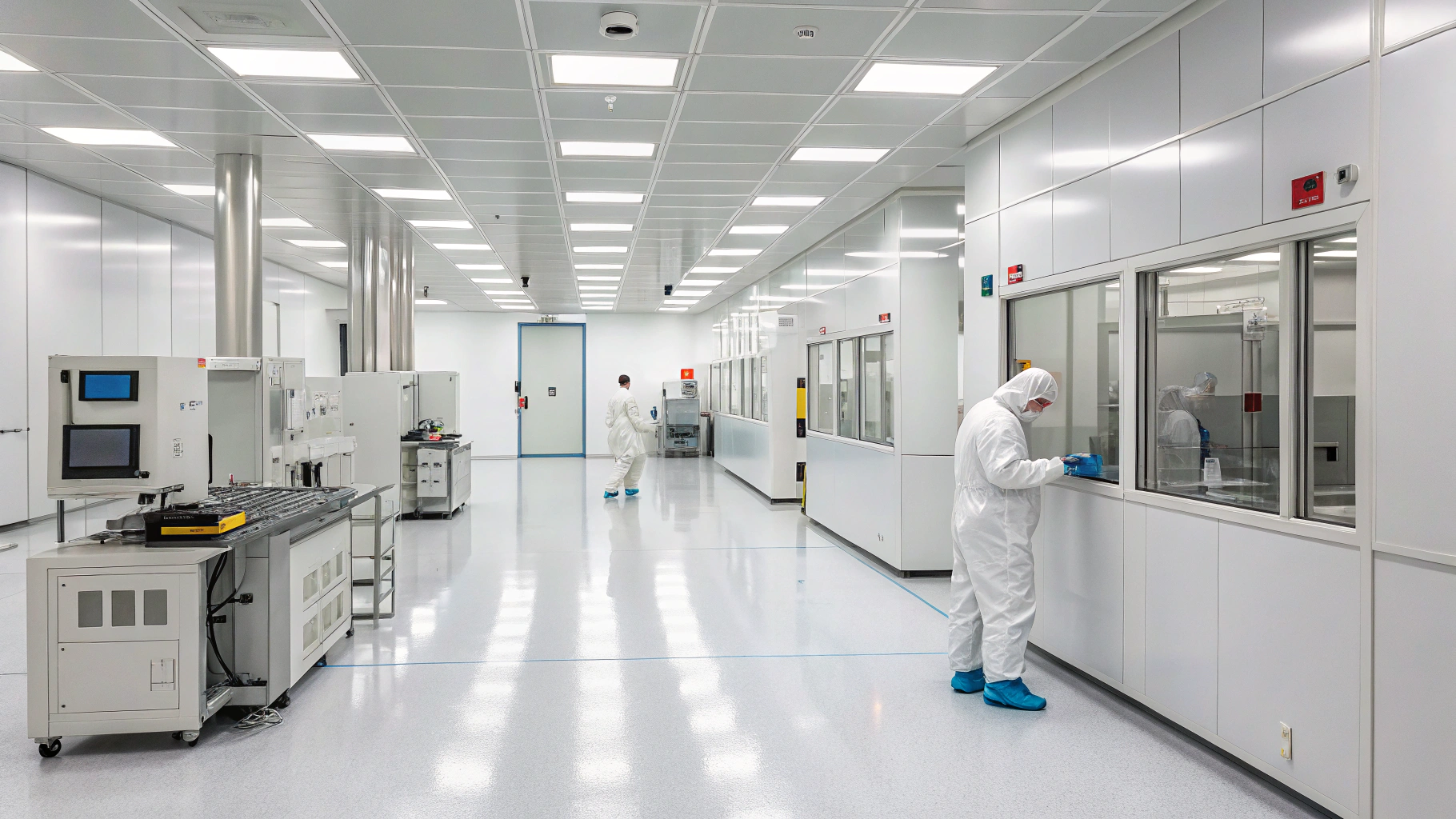
Contamination control in panel display vacuum chambers presents uniquely stringent requirements compared to many other vacuum applications. The visual nature of the end product means that defects as small as a few micrometers can result in visible imperfections and rejected panels. This drives exceptionally rigorous standards throughout the chamber design, manufacturing, and operation lifecycle.
Our approach begins with comprehensive material selection focused not just on vacuum compatibility but on long-term particulate generation characteristics. We conduct extensive testing of all materials under simulated process conditions to evaluate particle shedding behavior over thousands of cycles. This includes specialized testing of moving components like valve seals, substrate transport mechanisms, and thermal cycling elements, as these represent common sources of particulate generation.
Chamber design for display manufacturing incorporates specialized features to manage particle movement within the process environment. We implement strategic gas flow patterns that create "curtain" effects to isolate critical process areas from potential contamination sources. Additionally, our chambers include specialized collection zones where particles naturally migrate due to electric fields or gas flow patterns, effectively trapping contaminants away from substrate surfaces.
Surface treatment technologies play a crucial role in our contamination control strategy. Beyond standard electropolishing, we employ advanced techniques including chemical vapor deposition of ultra-pure protective layers and specialized passivation processes that create exceptionally stable oxide layers. These treatments minimize chemical interaction between process gases and chamber materials, reducing the formation of volatile compounds that could contaminate substrates.
For chambers used in the most critical processes, we implement in-situ cleaning capabilities that enable periodic removal of accumulated contaminants without breaking vacuum or exposing the chamber interior to atmospheric conditions. These systems typically utilize plasma cleaning processes with carefully selected gas chemistries that effectively remove organic contaminants and some metallic deposits without damaging chamber components.
What Thermal Management Challenges Exist in Display Manufacturing Chambers?
Poor thermal management in display manufacturing chambers leads to process inconsistencies, substrate warping, and component failures. Standard cooling approaches cannot handle the extreme heat loads generated during large-panel processing.
Panel display vacuum chambers must manage substantial thermal loads from processes like PECVD and sputtering while maintaining precise temperature control across large substrate areas. Advanced cooling systems, strategic thermal isolation, and specialized heat transfer mechanisms are essential design elements.
Thermal management in panel display vacuum chambers presents multifaceted challenges that require sophisticated engineering solutions. The substantial energy inputs from processes like plasma-enhanced chemical vapor deposition (PECVD) and magnetron sputtering generate considerable heat that must be precisely controlled to ensure process stability and protect both the substrate and chamber components.
We design comprehensive thermal management systems that address both active process heating and cooling requirements. For chambers implementing high-power processes, we develop water cooling systems with multiple independently controlled zones, allowing for tailored temperature profiles across different chamber regions. These systems incorporate high-efficiency cooling channels designed through computational fluid dynamics modeling to maximize heat transfer without requiring excessive coolant flow rates.
Temperature uniformity across large substrates requires specialized approaches beyond simple cooling. Our thermal management designs incorporate strategic placement of heating elements with advanced control algorithms that compensate for edge effects and other sources of thermal non-uniformity. For particularly demanding applications, we implement dynamic thermal control systems that actively adjust heating and cooling parameters based on real-time temperature monitoring across multiple chamber locations.
Thermal isolation represents another critical aspect of our chamber design philosophy. We carefully segregate heat-generating components from temperature-sensitive elements through strategic use of thermal breaks, radiation shields, and specialized low-conductivity structural supports. This approach prevents unintended heat transfer that could disrupt precise process conditions or damage sensitive components.
For chambers operating at elevated temperatures, we address thermal expansion challenges through careful material selection and compensation mechanisms in the structural design. This includes the use of bellows sections, floating mounts, and specialized expansion joints that accommodate dimensional changes while maintaining vacuum integrity and precise component alignment.
Advanced thermal modeling capabilities allow us to predict temperature distributions throughout the chamber under various process conditions, enabling optimization of cooling channel placement, identification of potential hot spots, and validation of thermal management strategies before manufacturing begins. This approach significantly reduces development time and ensures reliable thermal performance in the final chamber design.
Conclusion
Vacuum chambers for the panel display industry demand specialized design considerations that address the unique challenges of large-substrate processing, contamination control, and precise process conditions. By implementing industry-specific engineering solutions, manufacturers can achieve higher yields, better quality, and improved production efficiency for advanced display technologies.


